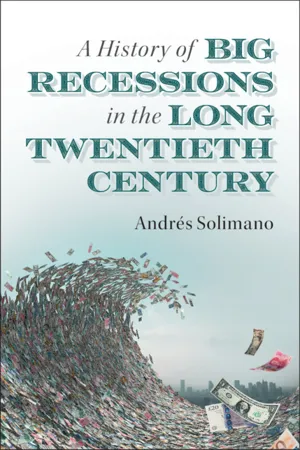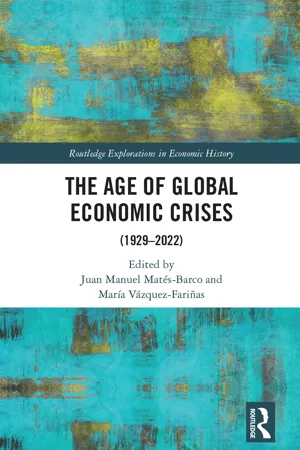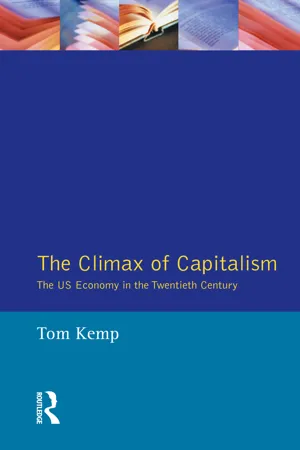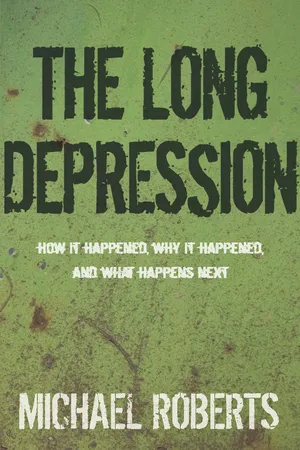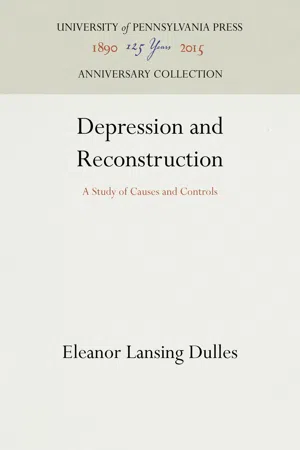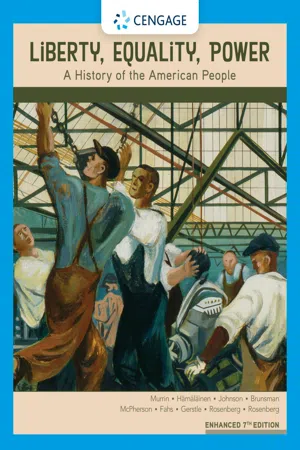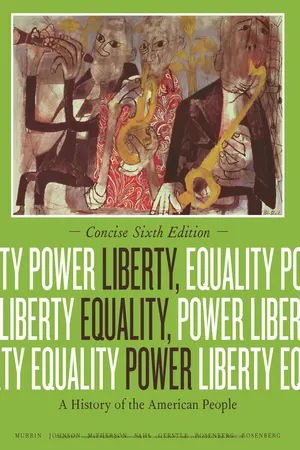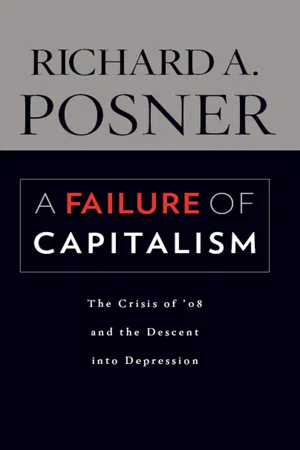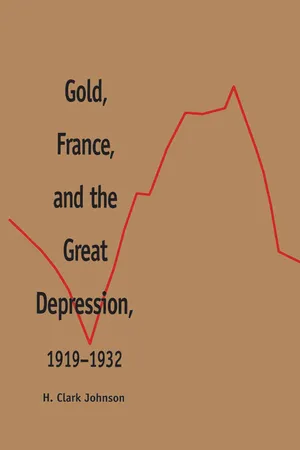History
Causes of the Great Depression
The Great Depression was caused by a combination of factors, including the stock market crash of 1929, overproduction, unequal distribution of wealth, and a decline in international trade. These factors led to a severe economic downturn, high unemployment rates, and widespread poverty. The resulting economic hardship had a profound impact on individuals and nations around the world.
Written by Perlego with AI-assistance
Related key terms
1 of 5
10 Key excerpts on "Causes of the Great Depression"
- Andrés Solimano(Author)
- 2020(Publication Date)
- Cambridge University Press(Publisher)
61 4 The Great Depression of the 1930s 4.1 Introduction The precise Causes of the Great Depression of the early 1930s, the worst slump of the twentieth century, remain somewhat of an unresolved mys- tery in economic analysis and history. It is apparent that while there is not a single cause of the Great Depression – or a single country responsible for the big international slump – we can make the following list of factors that did contribute to the Great Depression: (i) the stock market crash of 1929 in the United States; (ii) the decline in terms of trade and capital inflow for exporters of primary products in Latin America and Australia that started in 1928 or before; (iii) bankruptcies of banks in the early 1930s in America, Austria, and Germany; (iv) deflationary policies pursued by central banks in the context of the gold standard; (v) the timing of abandonment of the gold standard (the evidence shows that early-exit countries started their recovery sooner); (vi) the fall in domestic prices that increased the real value of debt held by consumers and firms with a negative effect on con- sumption and investment; and (vii) the lack of a decisive fiscal policy stance to face recessions and depressions by governments at that time. The Great Depression was an international slump rather than a con- traction affecting only a few isolated countries. However, the exact timing of the start and end of the Depression varied for the core, the European periphery, and primary exporters into Latin America, Asia, and Australia. It is important to recognize the international context that preceded the Great Depression. It is perhaps not a coincidence that the onset of the Great Depression occurred at the end of a particularly complex decade: the 1920s. The economic and political settlement fol- lowing World War I had serious consequences for Europe and the global economy. A central role in that settlement was played by the treaty of- eBook - ePub
The Age of Global Economic Crises
(1929-2022)
- Juan Manuel Matés-Barco, María Vázquez-Fariñas, Juan Manuel Matés-Barco, María Vázquez-Fariñas(Authors)
- 2023(Publication Date)
- Routledge(Publisher)
a body of starling incompetence .After many decades and numerous studies on the subject, there is no unanimity as to the most determinant causes of the depression. For some, they were mainly monetarist; for others, they lay in the fall in consumption and investment and how this spread throughout the economy. In recent years, new arguments have been put forward: the instability of agriculture, the First World War and the implementation of peace treaties, the breakdown of the gold standard, or the disruption of trade and the nationalist policies of the entire decade (Crafts and Fearon 2013).In any case, it is of great interest to reflect on the causes of the 1929 crisis and the subsequent depression. In this way, the economic policies applied by the different governments in order to achieve recovery can be appreciated with greater precision. The main difficulty lies in assessing the relative importance of each of them and differentiating between the stock market crash of 1929 and the depression that followed. Distinguishing between the causes of one and the other is not easy. It is clear that in the preceding months the importance of the problem was not grasped, and even the severity of the depression that followed was not even minimally perceived. As early as 1934, the complexity of the phenomenon and the impossibility of explaining it with a single reason were already being pondered. The influences were manifold and varied: political unrest, structural weaknesses, and nationalist mentality (Wandscheneider 2013).One of the reasons most often used to explain the collapse of the New York Stock Exchange is the exorbitant rise in stock prices. It has already been said that the boom in securities could not last indefinitely. Speculation decoupled from economic activity, that is, from production and profits, brings its own ruin. The lessons of speculation are recurrent – it had already occurred in 18th-century England and 19th-century France – and provide clear evidence of its harmful aspects. One might then ask about the reasons that led to the long and enormous speculation of the years 1927–1929. It was the result of monetary inflation caused by the policy of cheap money and easy credit granted by the Federal Reserve. This conduct was one of the most serious mistakes made by any banking organisation in the last century (Almunia et al. 2010). US authorities were overwhelmed by the pace and momentum of events. The speed of the circulation of money and the expectations of speculators swept away everything in their path. - eBook - ePub
War and Progress
Britain 1914-1945
- Peter Dewey(Author)
- 2014(Publication Date)
- Routledge(Publisher)
Superimposed on the depression, and mainly brought into play by it, were a series of financial crises. Some were internal, such as the waves of bank failures in central Europe and the USA. Some were external, such as the defaulting on interest payments in south America, or the German banking crisis which followed the flow back to the USA of the investment funds exported since 1924. Finally, there were exchange rate crises and devaluations, of which those of the UK in 1931 were the most notable.The causes of the depression are still debated. While space forbids extensive discussion here, it can be said that the main elements were the weak position of primary producers, in both agrarian and industrial economies; the ending of the industrial boom in the USA; destabilising capital flows; the decline of world trade; the decline of investment.2The cumulative effects of the depression between 1929 and 1932 were enormous. The collapse in industrial production was deepest in the USA and Germany, at 47 and 46 per cent repectively. The total import volume of the industrial – later OECD (Organisation for Economic Cooperation and Development) – countries fell by one-quarter, and consumer prices in the worst hit, the USA and Germany, fell by one-fifth. The value of exports of the primary producing regions collapsed, sometimes by as much as 80 per cent (Chile), but in most cases by at least 30–45 per cent (Lithuania, Philippines, Turkey, Venezuela). Along the way, international lending dried up completely; the gold standard was abandoned; most countries adopted protectionist policies.3THE NATURE OF THE DEPRESSION IN BRITAINThere seems little doubt that the British depression was largely the result of external influences. Unlike in the USA, there had not been a strong domestic boom in the late 1920s, whose collapse would precipitate a depression. Between 1924 and 1929, real GDP rose by about 13.7 per cent, which was slow by the standards of other industrial economies. Nor, on the other hand, had there been an export boom; between 1924 and 1929, the volume of domestic exports rose only by 7 per cent, and the current value of exports in 1929 (£729 million) was almost the same as it had been in 1928 (£724 million).4 - eBook - ePub
The Climax of Capitalism
The U.S. Economy in the Twentieth Century
- Tom Kemp(Author)
- 2014(Publication Date)
- Routledge(Publisher)
A decade of crisis: 1929—1939By its unexpectedness, its scale and its duration, the Great Depression of the 1930s had a traumatic effect on all sections of American society. Coming as a sequel to several years of prosperity which had led business spokesmen and leading economists to forecast a new era of crisis-proof expansion, it proved to be the longest and deepest in history.For three and a half years following the Wall Street crash, the economy continued on a downward plunge, ruining millions of small businessmen and farmers, condemning one quarter of the labour force to unemployment and almost destroying the banking system. In what Americans proudly assumed was the richest country in the world, the living standards of many unemployed workers and poor soil farmers fell to 'third world' levels. The blow to the 'American dream' was so sudden and severe that the reaction of many was one of disbelief and passivity rather than of anger. There was no sharp turn to the left by a segmented working class, no mass middle-class support for a far-right saviour - though both tendencies were later to appear.The explanation of the Great Depression poses many problems for economists and it is not surprising that no consensus should exist. Many were, and still are, reluctant to attribute it to some organic weakness of capitalism, looking rather to extraneous circumstances, mistakes in government policy or wrong decisions by the monetary authorities.The Greatest Depression
Most accounts of the Depression begin with the Wall Street crash, so that the beginning of the Depression can be exactly dated to 24 October 1929. It is unlikely that the crash would have been followed by such devastating consequences had there not been about this time the coming together of various factors making for a slump. The crash, while particularly severe, was a financial panic of a classic type familiar in the financial history of European countries as well as the United States. Its form was a rush into liquidity by those holding shares, and later, other types of paper - bonds, securities, bills of exchange bringing prices crashing down. In the previous months share prices had been rising at an extraordinary rate, the result of excessive speculation in which large numbers of people, including many newcomers to stock-market transactions, had been participating. In such speculative manias, a time comes when confidence in the continued upward movement of stock-market prices begins to break. Some feel the urge to sell before the fall begins, or become overcommitted and have to sell to settle payments elsewhere. Once selling generates a fall there is a good chance that the movement will spread until it becomes an avalanche. Weaknesses and frauds are exposed, and it becomes virtually impossible to reverse the trend. - eBook - ePub
The Long Depression
Marxism and the Global Crisis of Capitalism
- Michael Roberts(Author)
- 2016(Publication Date)
- Haymarket Books(Publisher)
Chapter 1 The Cause of DepressionsThe trigger for crisis can be any number of historical accidents such as the subprime mortgage swindle. It is necessary to deal with different levels of causation. The main point here is that capital is drawn into speculative activity when the rate of profit is low, so accident is the manifestation of necessity.—Mick Brooks 1Those who choose to see each such episode as a singular event, as the random appearance of a “black swan” in a hitherto pristine flock, have forgotten the dynamics of the history they seek to explain. And in the process they also conveniently forget that it is the very logic of profit which condemns us to repeat this history.—Anwar Shaikh 2The Nature of DepressionsThere have been several depressions (as opposed to regular and recurring economic slumps or recessions) in modern capitalism. The first was in the late nineteenth century (1873–97); the second was in the mid twentieth century (1929–39); and now we have one in the early twenty-first century (2008–?).Before the 1930s, all economic downturns were commonly called depressions. The term recessionwas coined later to avoid stirring up nasty memories. A recession is technically defined by mainstream economics as two consecutive quarters of contraction in real gross domestic product (GDP) in an economy. According to data compiled by the US National Bureau of Economic Research (NBER), recessions in the US economy on average have lasted about eleven months in the eleven official recessions since 1945. For the period recorded since 1859, recessions average about eighteen months. On average, the gap between each slump has averaged about six years in the postwar period and a little less over all thirty-three cycles, as defined by the NBER (see Table 1.1). - eBook - PDF
Depression and Reconstruction
A Study of Causes and Controls
- Eleanor Lansing Dulles(Author)
- 2016(Publication Date)
Be-tween these groups there may lie doubtful influences and uncertain types, but the more pressing causes are subject to a classification such as this which takes account of the time element and also of the agencies which are responsible. Al-1 Gottfried Haberler, Systematic Analysis of the Theories of the Business Cycle (League of Nations, Geneva, 1 9 3 4 ) . 49 50 DEPRESSION A N D R E C O N S T R U C T I O N ready it is possible to fit specific examples from recent years into this fourfold outline of causes. Even now it is fairly clear that the general underlying causes of weakness have been the same in the United States as in other countries and at other times. For example, the failure to know the future marketability of goods, enhanced by a natural but unjustified optimism, led to a temporary overproduction and an unnatural underconsumption which brought on large-scale unemployment. This situation is an undeniable fact, but it is not a usable explanation and points to no particular solutions. Precipitating events occurred in considerable number and at those critical stages when the different sets of disturbing influences which have been said to constitute the three super-imposed depressions of 1929, 1930 and 1931 came into ac-tion. The war is accountable indirectly for many of these events. It is essential to observe, however, that as a decade intervened between the end of hostilities and the beginning of the great decline, the factors which had their origin in the war and which caused serious distortion in the later period were not inevitable consequences but were the result of fail-ures to reform obvious evils. Clearly, there were errors in policy which exaggerated initial strains, and these later more significant influences fall under the third and fourth types of causes. - eBook - PDF
Liberty, Equality, Power
A History of the American People, Enhanced
- John Murrin, Pekka Hämäläinen, Paul Johnson, Denver Brunsman(Authors)
- 2019(Publication Date)
- Cengage Learning EMEA(Publisher)
The Great Depression brought cultural crisis as well as economic crisis. In the 1920s, American business leaders had successfully redefined the national culture in business terms, as Americans’ values became synonymous with those that entrepreneurs espoused: economic growth, freedom of enterprise, and acquisitiveness. 25.1 Humbling America’s Manufacturing Might This Diego Rivera 1933 fresco, painted on the South Wall of the Detroit Institute of Art, portrays automobile workers in Henry Ford’s River Rouge plant in Dearborn, Michigan, then considered one of the largest and best integrated production facilities in the world. Contemporary viewers of this fresco may have wondered how it was that manufacturing plants of such ambition and ingenuity could have been humbled for so long by the America’s Great Depression. Marmaduke St. John/Alamy stock photo CHAPTER 25 The Great Depression and the New Deal, 1929–1939 686 The possibility of making a fortune by investing a few thousand dollars only intensified investors’ greed. As speculation became rampant, money flowed indiscriminately into all kinds of risky enterprises. The stock market spiraled upward, out of control. When, in October 1929, confidence in future earnings faltered, creditors began demanding that investors who had bought stocks on margin repay their loans. The market crashed from its dizzying heights. The crash by itself fails to explain why the Great Depression lasted as long as it did. Poor decision making by the Federal Reserve Board, an ill-advised tariff that took effect soon after the Depression hit, and excessive concentration of wealth in the hands of the rich deepened the economic collapse and made recovery more difficult. 25-1b Mistakes by the Federal Reserve Board In 1930 and 1931, the Federal Reserve curtailed the amount of money in circulation and raised interest rates, thereby making credit more difficult for the public to secure. - No longer available |Learn more
Liberty, Equality, Power
A History of the American People, Concise Edition
- John Murrin, Paul Johnson, James McPherson, Alice Fahs(Authors)
- 2013(Publication Date)
- Cengage Learning EMEA(Publisher)
C H A P T E R 25 the great depression and the new deal, 1929 – 1939 Causes of the Great Depression Stock Market Speculation Ineffective Federal Policies A Maldistribution of Wealth HOOVER: THE FALL OF A SELF-MADE MAN Hoover ’ s Program The Bonus Army A CULTURE IN CRISIS THE DEMOCRATIC ROOSEVELT An Early Life of Privilege Roosevelt Liberalism THE FIRST NEW DEAL, 1933 – 1935 Saving the Banks Economic Relief Agricultural Reform Industrial Reform Rebuilding the Nation ’ s Infrastructure The TVA Alternative The New Deal and Western Development POLITICAL MOBILIZATION, POLITICAL UNREST, 1934 – 1935 Populist Critics of the New Deal Labor Protests Anger at the Polls Radical Third Parties THE SECOND NEW DEAL, 1935 – 1937 Philosophical Underpinnings Legislation Victory in 1936: The New Democratic Coalition Rhetoric versus Reality Men, Women, and Reform Labor in Politics and Culture AMERICA ’ S MINORITIES AND THE NEW DEAL Eastern and Southern European Ethnics African Americans Mexican Americans American Indians THE NEW DEAL ABROAD STALEMATE, 1937 – 1940 The Court-Packing Fiasco The Recession of 1937 – 1938 T he Great Depression began on October 29, 1929 (Black Tuesday) with a spectacular stock market crash. On that one day, the value of stocks plummeted $14 billion. By the end of that year, stock prices had fallen 50 percent from their September highs. By 1932, the worst year of the Depression, they had fallen another 30 percent. The unemployment rate soared to 25 percent, and scenes of misery unfolded across the nation. In cities, the poor meekly awaited their turn at ill-funded soup kitchens. Scaven-gers poked through garbage cans for food. Hundreds of thou-sands of Americans built makeshift shelters out of cardboard and scrap metal. They called their towns “ Hoovervilles, ” after the president they despised for his apparent refusal to help them. - eBook - ePub
A Failure of Capitalism
The Crisis of ’08 and the Descent into Depression
- Richard A. Posner(Author)
- 2011(Publication Date)
- Harvard University Press(Publisher)
1The Depression and Its Proximate Causes
A SEQUENCE of dramatic events has culminated in the present economic emergency: low interest rates, a housing bubble, the collapse of the bubble, the collapse of the banking system, frenzied efforts at resuscitation, a drop in output and employment, signs of deflation, an ambitious program of recovery. I need to trace the sequence and explain how each stage developed out of the preceding one. This chapter opens with a brief sketch of the basic economics of depression and of fighting depression and then turns to the particulars of this depression.Suppose some shock to the economy—say, a sudden fall in the value of people’s houses and securities—reduces the value of personal savings and induces people to spend less so they can rebuild their savings. The demand for goods and services will therefore fall. Before the shock, demand and supply were both X; now demand is X − Y. How will suppliers respond? If—a critical assumption—all prices, including the price of labor (wages), are completely flexible, suppliers, including suppliers of labor—workers—will reduce their prices in an effort to retain as many buyers as possible. With consumers saving more because they are buying less, and at lower prices, interest rates—earnings on savings—will fall because there will be a savings glut. The lower interest rates will induce borrowing; and with more borrowing and lower prices, spending will soon find its way back to where it was before the shock. One reason this will happen is that not all consumers are workers, and those who are not, and whose incomes therefore are unimpaired, will buy more goods and services as prices fall.The flaw in this classical economic theory of the self-correcting business cycle is that not all prices are flexible; wages especially are not. This is not primarily because of union-negotiated or other employment contracts. Few private-sector employers in the United States are unionized, and few non-unionized workers have a wage guaranteed by contract. But even when wages are flexible, employers generally prefer, when demand for their product drops, laying off workers to reducing wages. Think of all the financial executives who have been laid off even while bonuses—often amounting to half the executive’s pay—were being cut, sometimes to zero. - Sue Prideaux(Author)
- 1998(Publication Date)
- Yale University Press(Publisher)
Why Did the Depression Happen? 187 consequences and in which the structural problem was the effort to recon-struct an international gold standard with an inadequate reserve base. Heads of State and central bankers during the 19208 were never presented with the advice that the price of gold was too low and ought to be adjusted. Moreover, most of the economic literature on the depression during the past several decades has equally neglected this fundamental issue. Keynes bears some responsibility. He did not identify the comparative suc-cess of the prewar gold standard with the relative abundance of new gold supplies or the historically high level of gold's real value. He framed the 192.5 sterling parity issue in terms of its cyclical impact upon the British economy, rather than in the context of the postwar world liquidity shortage. This weak-ened his case against resumption of prewar parity. A lifelong advocate of managed money, he publicly dismissed the importance of the world's supply of gold in 1916 —which contradicted the better judgment of Cassel, Hawtrey, and Rist. After passage of the French Monetary Law, he acknowledged that Cassel had indeed been right in warning of a gold shortage. But his subsequent writings emphasized instead the instability of expectations and irrational mar-ket behavior, often within a closed-economy framework. Keynes occasionally observed that the supply of new gold is responsive to price signals, but this insight was far from his usual concerns. Had his Treatise or General Theory included discussion of the role of the undervaluation of gold in giving impetus to the worldwide profit deflation, the economic literature on the depression in the decades following might have been very different. One's judgments about the role of individual policy-makers follow from the country-by-country summary. In the cases of Britain and the United States, critical decisions often mirrored broad consensus.
Index pages curate the most relevant extracts from our library of academic textbooks. They’ve been created using an in-house natural language model (NLM), each adding context and meaning to key research topics.
